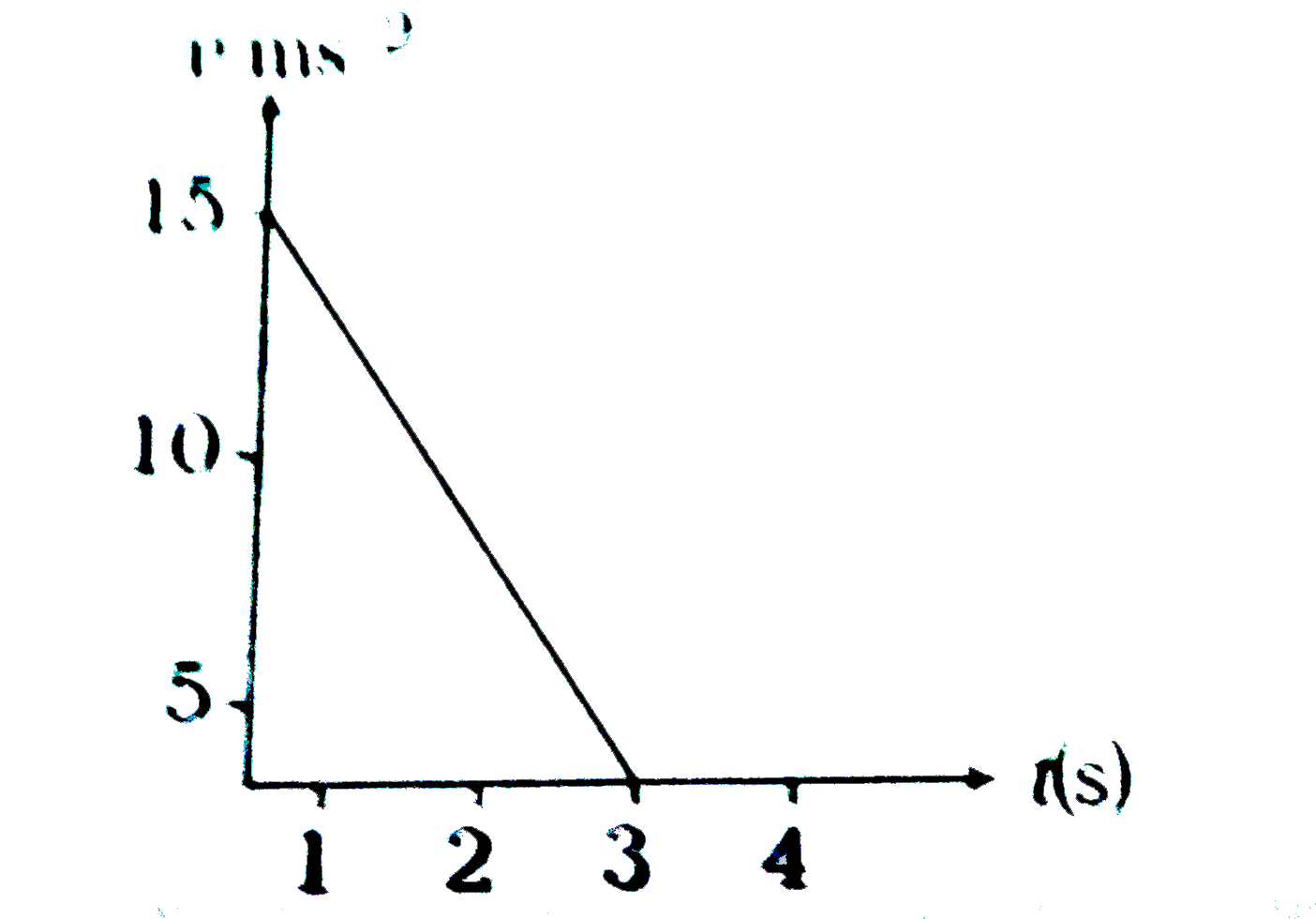A graph between the square of the velocity of a particle and the distance 'S' moved by the particle is shown in the figure. The acceleration of the particle in kilometer per hour square is

A
2250
B
225
C
−2250
D
−1225
Video Solution
Text Solution
Since, V2r−V2i=2aS
a=−2250kmh−2
|
Topper's Solved these Questions
- TEST PAPERSBOOK - BANSALCHAPTER - TEST PAPERSEXERCISE - PHYSICS PART (A)
32 Videos
- TEST PAPERSBOOK - BANSALCHAPTER - TEST PAPERSEXERCISE - PHYSICS PART (B)
3 Videos
- TEST PAPERSBOOK - BANSALCHAPTER - TEST PAPERSEXERCISE - PHYSICS PART- C
4 Videos
- SEMICONDUCTORSBOOK - BANSALCHAPTER - SEMICONDUCTORSEXERCISE - CBSE Question
32 Videos
Similar Questions
Knowledge Check
A graph between the square of the velocity of a particle and the distance s moved by the particle is shown in the figure. The acceleration of the particle is
 A−8ms−2B−4ms−2C−16ms−2DNone of these
A−8ms−2B−4ms−2C−16ms−2DNone of theseA graph between the square of the velocity of a particle and the distance(s) moved is shown in figure. The acceleration of the particle in kilometers per hour square is:-
 A2250B3084C-2250D-3084
A2250B3084C-2250D-3084A graph between the square of the velocity of a particle and the distance(s) moved is shown in figure. The constant acceleration of the particle in kilometer per hour square is:
 A2250B3084C−2250D−3084
A2250B3084C−2250D−3084
Graph of velocity versus displacement of a particle moving in a straight line is as shown in figure.
The acceleration of the particle is.

View SolutionThe velocity - time graph is shown in the figure, for a particle. The acceleration of particle is

View SolutionThe velocity -time (v−t) graph of a particle moving in a straight line is shown in figure. The acceleration of the particle at t=9 is:

View SolutionVelocity versus displacement graph of a particle moving in a straight line as shown in figure.

The acceleration of the particle.
View SolutionThe variation of velocity of a particle moving along straight line is shown in the figure. The distance travelled by the particle in 4 s is

View Solution


